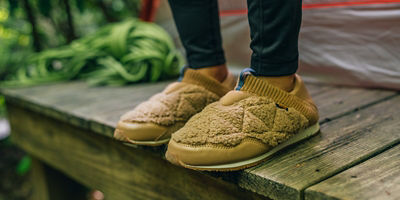
That’s true for meals cooked over a camp stove, and even more so for food made over a campfire. There’s something deeply satisfying—and fun—about preparing a meal the way our ancestors did. And though it might sound intimidating at first, cooking over the coals and open flame of a campfire really is simple once you get the hang of a few tricks and equip yourself with the right gear.
Upgrade your camp meals by learning:
- How to build a fire for cooking
- What cookware you’ll need for popular camp meals
- Techniques for grilling, roasting, baking, and more
Building a Cooking Fire
You may know how to build a fire, but do you know how to build one optimized for cooking? A little know-how will get you a consistent heat source perfect for food prep.
Start with safety: Make sure campfires are allowed at your campsite (check with the relevant land management agency ahead of time). Even if they are, don’t build one if it’s windy enough to blow embers away from the fire and risk starting a bigger blaze. Established fire pits or rings are the safest places to build a fire, and result in the least impact on the land. Make sure the overhead area and a 10-foot circle around the fire site is well clear of overhanging branches and anything flammable. When you’re done, douse the fire with water and dirt until it’s cold enough to put your hand in.
Keep it small: You don’t need a raging bonfire for cooking. In fact, that kind of blaze will burn hot and fast, which isn’t what you want for food prep. Instead, make it on the small side (1.5 feet in diameter or less) for better control.
Burn it down: Most campfire cooking techniques require hot coals, not leaping flames. Make sure you give yourself enough time before dinner to get your fire going and burn it down to evenly heating coals; this can take 30 to 45 minutes.












